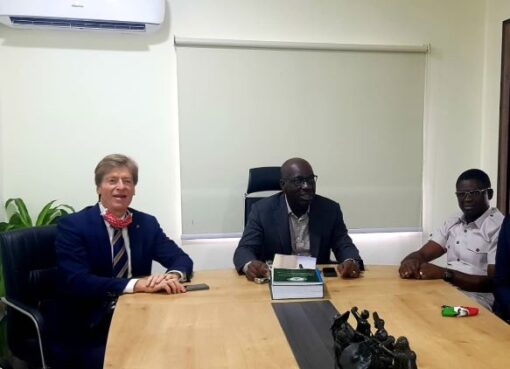You could measure Donald Trump’s victory in the silence and stillness on both sides of this sunbaked border.
The reception centre in McAllen, Texas which used to feed and clothe hundreds of migrants and refugees daily is now nearly deserted.
The shelters in Reynosa, Mexico, where travellers thronged in preparation to cross the Rio Grande are now quieter than libraries.
Even the arrival of Francisco Ramirez, 36, who crossed the river on an inflatable raft last week with three other Salvadoreans, was a victory of sorts for Trump. “The smuggler complained that normally he would have 12 clients,” Ramirez said.
With stalled plans to shake up trade, healthcare and other policies during his first 100 days in office, the president can at least point to the south-western border and declare success.
“Yes, he has succeeded,” said Hector Joaquin Silva de Luna, who runs the the Senda de Vida shelter in Reynosa. “The numbers have fallen. People are afraid.”
According to US Customs and Border Protection (CBP) data, 12,193 people were apprehended on the US-Mexico border in March, the lowest number since fiscal year 2000. That represents a 64% decline from the same month last year. The plunge began in January, when Trump was inaugurated.
“It looks good for him that the numbers have come down,” said Sister Norma Pimentel, executive director of Catholic Charities of the Rio Grande Valley.
There are other factors, including crackdowns by Mexican authorities, but few doubt the Trump effect.
“That’s a tremendous achievement,” the president told the Associated Press in a recent interview.
There are, however, two problems with this policy of fear: it is worsening a humanitarian crisis by exposing people to abduction, extortion and murder and it may stop working.
There is already anecdotal evidence in McAllen that the numbers of arrivals from Central America – principally Guatemala, El Salvador and Honduras – are rebounding.
“I think they’ve stopped to wait and see what’s happening here in the US,” said Jennifer Harbury, a local lawyer and veteran human rights activist. “I think the surge will happen again, it’s just a matter of when it’ll explode.
“Because people can’t stay in their countries and it’s not safe in Mexico. They don’t come to buy refrigerators. It’s life and death.”
After Trump’s victory in November, US officials at the international bridge just north of Reynosa started turning away asylum seekers who had credible fear of persecution back home in Central America, which has the world’s highest murder rate, and in Mexico, Harbury said.
An injured Guatemalan waitress, she said, was kidnapped as soon as she returned across the bridge. The lawyer also cited a couple with a toddler who were turned away six times even though the father had a bullet scar.
“Every time they crossed and were sent back they feared being kidnapped,” she said.
The number of people applying for asylum in Mexico has spiked by more than 150% since Trump entered the White House, a sign of waning hope of finding sanctuary in the US.
Reynosa turned into a war zone last weekend when Mexican marines cornered and killed a Gulf cartel leader, Juan Manuel Loza, also known as El Toro. Cartel gunmen blocked roads and set fire to dozens of vehicles and several buildings.
Migrants and refugees in the gritty, dusty city, which clings to the ghost of a tourist industry, have target signs on their backs because criminal gangs assume they have relatives in the US who will pay ransoms. Deportees are also targeted.
Miguel, a 42-year-old labourer recently deported from the US after serving time for illegal entry, said a gang pulled him off a bus as he tried to go home. “They have spies at the bus station,” he said, speaking on condition his real name not be used. . “They know everything.”
The gang beat and tied him up for two weeks in a house with about 15 other hostages, he said, and demanded he phone relatives in the US. Eventually they accepted he didn’t have any, he said.
Miguel spoke at a Catholic-run migrant shelter where a poster gives John Le Carre-style survival tips. “When you finish a call from a fixed line,” one says, “dial another number so no one will know your family’s number.”
It was useful advice for Juan Hernandez, 27, who has a wife and daughter in the San Francisco bay area. But having lived in the US since he was four, and speaking only English, he couldn’t understand the poster. He stabbed a man in 2009 – allegedly in self-defence – prompting a chain of events which led to deportation last week.
“I’m frightened,” he said. “I have no family over here. I don’t know what to do.”
Hernandez hoped for a pardon, notwithstanding the fact that Trump campaigned for the White House on the promise of expelling “bad hombres”, real or perceived.
He almost certainly would also have been expelled under Barack Obama, who broke records with 2.5m formally expelled, earning the sobriquet “deporter-in-chief”. Obama also expanded border security – more fences, gadgets, agents – and tightened restrictions on Haitians and Cubans entering the US.
“He talked nicely about immigration reform, pretty talk, but he screwed immigrants,” said Omar Reyes, 35, a recent deportee from Chicago. “Trump’s just doing the same.”
Trump has put hardliners in charge of immigration policy. Immigration and Customs Enforcement (Ice) has already widened the net and ramped up arrests. But budget constraints and recruitment headaches may stymie the building of Trump’s promised wall and expanded enforcement. Court backlogs may impede mass deportations.
Tough talk deters for only so long unless backed by action, Mark Krikorian, executive director of the Center for Immigration Studies, which favours immigration restrictions, warned the administration last month.
There are already signs in this corner of Texas and Mexico that some have concluded Trump’s fangs are, for now, plastic.
A floated proposal to separate mothers from children, for instance, chilled many would-be migrants. But the administration has not formally followed through. Arrivals at the McAllen reception centre said word was seeping back to Central America that the risk of separation was low.
“We heard there was a way through,” said Abel Pacay Choc, 23, a farmer who came with three male relatives, including a five-year-old, from Guatemala.
“I heard they were separating parents and kids, then I heard it was OK,” said Carlos Manuel Reyes, 35, a Honduran farmer who brought his eight-year-old daughter. They were bound for Florida.
Ramirez, the Salvadorean who floated across the river last week, brought two daughters and once on US soil sought out Border Patrol. “We were waving at the helicopter,” he said.
Other arrivals said they had feared separation but risked it because they were fleeing for their lives.
“The gang gave me a week to pay,” said a Salvadorean shopkeeper who declined to be named. Unable to pay the extortion, he took his eight-year-old son on the odyssey north.
Whatever happens in the US, human traffickers spin and twist the news to drum up business. If Hillary Clinton had won the election, they reportedly were going to urge people to rush north, to avail of amnesty.
When Trump won, the message was to rush before the wall arose. Now the message appears to be that the president’s bark is worse than his bite.
Late last year, the McAllan reception centre received almost 2,800 people weekly. After January that plunged to 50. Last week it ticked up to about 100. It’s too soon to divine a trend but Sister Norma had a hunch.
“I think we’ll see a gradual increase,” she said.
(TheGuardian US)







